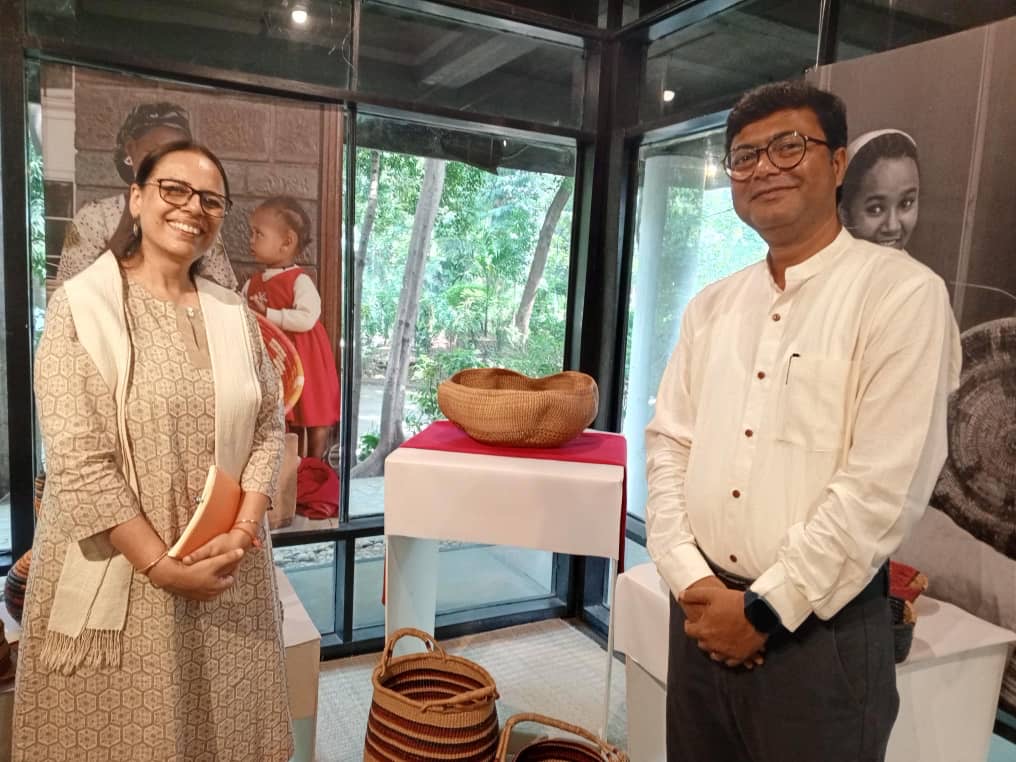By Patrick Ofoe Nudzi
Ahmedabad, Oct. 30, GNA – Directors and lecturers from the Institute of Design, Ahmedabad, India, have called for collaboration between the Institute and Ghana’s handicraft sector and academia to harness the sector’s potential.
They said the only way the sector could generate the needed revenue and income for its citizens and contribute to the country’s economic growth would be to add value to the finished products.
Madam Neelima Hasija, Head of International Programmes and Collaborations, said this when a group of journalists from West and Central Africa visited the institute as part of a familiarisation tour organised by the Ministry of External Affairs, India.
She said understanding value addition, design techniques, innovative trends and technologies as crucial for the sector could fully be achieved through collaboration and synergy by the actors.
Madam Hasija said as part of creating a vibrant craftsmanship ecosystem for Indian and African countries in the global south, they had engaged basket weavers in Ethiopia, Zimbabwe and Ghana for transfer of learning and training.
In all, they selected 25 women from these African countries to participate in some craftsmanship projects whilst the Institute also sent some Indians to understand the skill set, acquisition of raw materials, how to prepare the raw materials and what the Africans were doing right.

“We found out some commonalities from the designs of the Ethiopians. The opportunities and challenges we found in our communities were similar to Africa. It is good we work together and develop our sectors,” she said.
In an interview with the Ghana News Agency (GNA), the Head of International Programmes, also said that there were some limitations with the Ghanaian team as their baskets were not designed to meet the market demands.
“Though we were satisfied with the quality of the raw materials which include elephant grass, also known as veta vera grass, straw, bamboo and leather used, the design techniques and aesthetics value displayed needed much improvement,” she said
She said the Ghanaian craft industry needed the requisite tools and ought to be social media savvy to be able to design for that market, adding that they would like to have more collaborations with Ghana.
Madam Andrea Noronha, Head of outreach Programme Lead, Furniture Design, said the Institute was helping by using cutting-edge technology to develop their bamboo resource for modern products like furniture, kitchen equipment, and hangers, amongst others.
“We have a large bamboo resource and we are using it extensively to manufacture products that depict our cultural identity, whilst generating the needed revenue,” she said.
Mr Samir More, Programme Officer, International Programmes, said out of their collaboration, they had signed 100 Memorandum of Understanding (MoUs) around the globe with a focus on full and exchange programmes.
“In Africa, we have exchange programmes with the Faculty of Arts, Design and Architecture (FAD) in Johannesburg, South Africa, Kigali Institute of Science and Technology, Kigali, Rwanda and Faculty of Arts, Kwame Nkrumah University of Science and Technology (KNUST), Kumasi, Ghana.
GNA